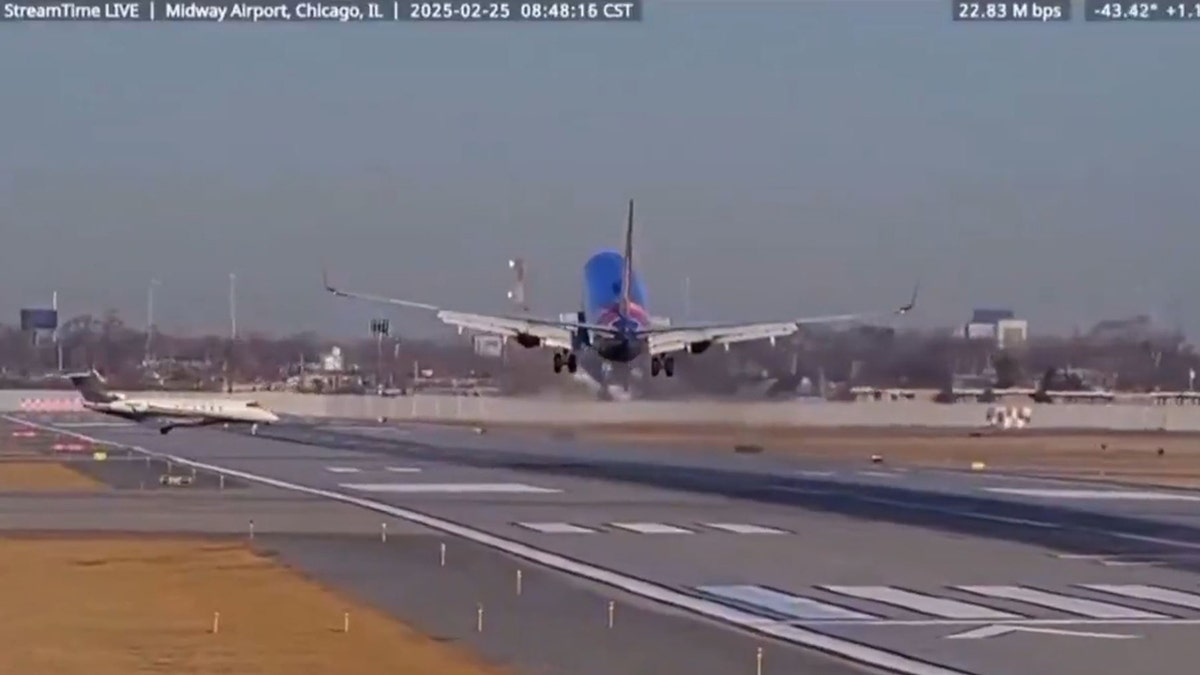
Near-Miss at Chicago Airport: NTSB Chair Blames Private Jet Crew for Runway Incursion
A harrowing incident at a Chicago airport, where a Southwest Airlines plane narrowly avoided a collision with a private jet, has sparked a federal investigation and reignited concerns about air safety. National Transportation Safety Board (NTSB) Chair Jennifer Homendy has publicly stated that preliminary findings point to a failure by the Flexjet private jet crew to adhere to air traffic control instructions, leading to the dangerous situation.
Homendy’s remarks, delivered during a Wednesday morning appearance on "Fox & Friends," shed light on the initial assessment of the near-miss. She explained that the Flexjet crew was explicitly instructed to "line up and wait and hold short of runway 31C," the same runway on which the Southwest plane was actively landing. The crew’s apparent failure to comply with these instructions resulted in the Flexjet crossing the runway as the Southwest aircraft touched down.
The Southwest pilots, demonstrating quick thinking and skillful maneuvering, observed the encroaching Flexjet and immediately initiated a takeoff to avoid a collision. Their swift actions averted what could have been a catastrophic event.
Despite the preliminary assessment pointing towards pilot error on the part of the Flexjet crew, Homendy emphasized that the NTSB’s investigation is ongoing and a comprehensive analysis is required before any final conclusions are drawn or punitive actions are taken.
"There’s a lot of information we still have to collect," Homendy stated. "We want to know what was going on in the cockpit of that airplane. We will collect air traffic control communications. We have asked for the cockpit voice recorder and flight data recorder from Flexjet." These recordings will provide critical insights into the crew’s decision-making process and communication within the cockpit in the moments leading up to the near-miss.
The incident has drawn attention from various corners, including former President Donald Trump, who weighed in on the matter via social media. Trump suggested that the Flexjet pilots may have been "sleeping" and called for the suspension of their licenses. "GREAT JOB BY THE SOUTHWEST PILOTS IN CHICAGO. A NEARLY TRAGIC CLOSE CALL. PERHAPS SUSPEND THE PILOTS LICENSE OF THE OTHER PLANE, WHO MUST HAVE BEEN SLEEPING!" he wrote on Truth Social.
The Federal Aviation Administration (FAA) has also issued a preliminary statement confirming that the "business jet entered the runway without authorization." The agency, along with the NTSB, is actively investigating the incident to determine the full sequence of events and contributing factors.
Flexjet has released a statement acknowledging the incident and affirming its commitment to safety. "We are aware of the occurrence today in Chicago," a Flexjet spokesperson said. "Flexjet adheres to the highest safety standards and we are conducting a thorough investigation. Any action to rectify and ensure the highest safety standards will be taken."
The potential consequences for the Flexjet crew could be severe, ranging from license suspension to revocation, depending on the findings of the investigation. Transportation Secretary Sean Duffy has suggested that the Flexjet crew may have their licenses revoked.
In the wake of the incident, Homendy sought to reassure the public about the safety of air travel. She emphasized that, despite the near-miss and other recent aviation incidents, air travel remains the safest mode of transportation.
The Chicago near-miss is occurring amidst heightened scrutiny of air travel systems. Transportation Secretary Sean Duffy ramped up scrutiny after a recent helicopter crash. Less than 48 hours later, a medical ambulance flight crashed in Philadelphia, leaving seven people dead. And just last week, two small planes collided midair at a regional airport in Arizona, killing two people.
The NTSB investigation into the Chicago incident will focus on a range of factors, including:
- Pilot performance: The crew’s adherence to air traffic control instructions, their situational awareness, and their decision-making processes will be thoroughly examined.
- Air traffic control procedures: The clarity and effectiveness of air traffic control communications and procedures will be assessed.
- Aircraft systems: The performance of the Flexjet aircraft’s navigation and communication systems will be reviewed.
- Environmental conditions: Any potential impact of weather or visibility on the incident will be considered.
The findings of the NTSB investigation will be crucial in identifying the root causes of the near-miss and implementing corrective actions to prevent similar incidents in the future. These actions may include revisions to air traffic control procedures, enhanced pilot training, or improvements to aircraft technology.
The Chicago near-miss serves as a stark reminder of the importance of vigilance and adherence to safety protocols in the aviation industry. While air travel remains remarkably safe overall, even a single lapse in judgment or a minor procedural error can have potentially catastrophic consequences. The ongoing investigations and subsequent recommendations are aimed at further mitigating risks and ensuring the continued safety of the traveling public.
The incident also highlights the complexities of the aviation system, where multiple stakeholders, including pilots, air traffic controllers, airlines, and regulatory agencies, must work together seamlessly to ensure safe operations. Effective communication, clear procedures, and a strong safety culture are essential components of a robust aviation system.
